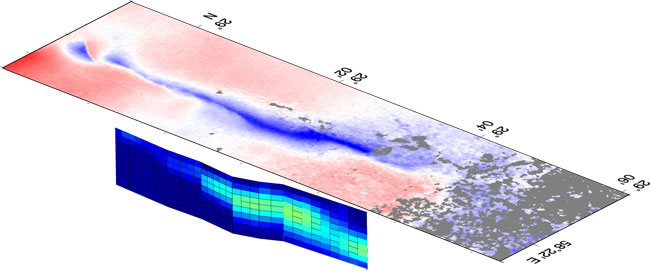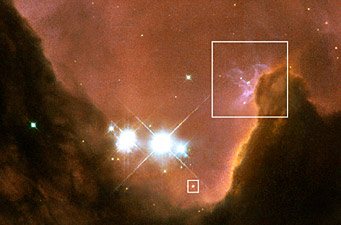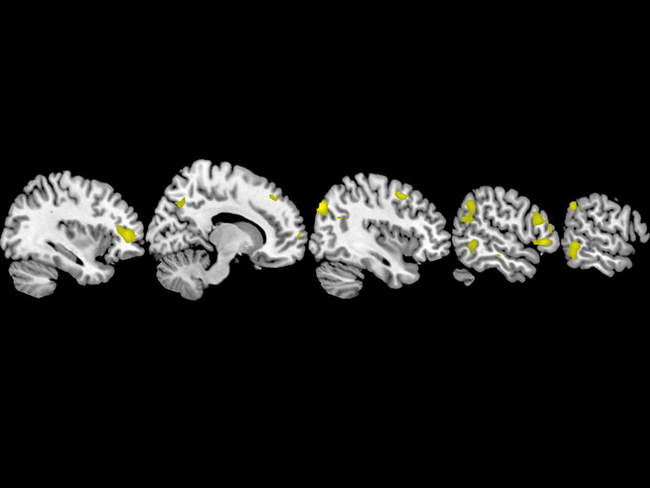
© E. Fielding et alThree-dimensional perspective view of vertical displacement of the land surface south of Bam, Iran during the three and a half years after the December 26, 2003 earthquake derived from analysis of radar images. The model below shows the zone of rock damage that contracted or healed after the earthquake, with the green colors showing the strongest contraction.
For the first time, scientists have watched as the Earth's surface "heals" itself following the disruptive jolt of an earthquake, in this case, the 2003 temblor that devastated Bam, Iran.
The fault under the city erupted in a 6.6-magnitude quake on Dec. 26 that year, leveling the town and killing more than 26,000 people. But though devastation was evident, there was no clear fault mark at the surface.
"The fault slipped maybe 2 or 3 meters [6.5 to 10 feet] at depth, but at the surface, when colleagues of mine went out, they found some cracks, but the motion on those cracks is only about up to 25 centimeters [10 inches] or less," said one of the scientists who studied the quake, Eric Fielding of Caltech. "We have some layer of material near the surface that's behaving differently from the fault at depth."
Seismologists had noticed similar mismatches between depth and surface fault movements during other earthquakes. Because eventually both layers of the fault have to match up, the question was, "what's happening in this surface layer?" Fielding said.


